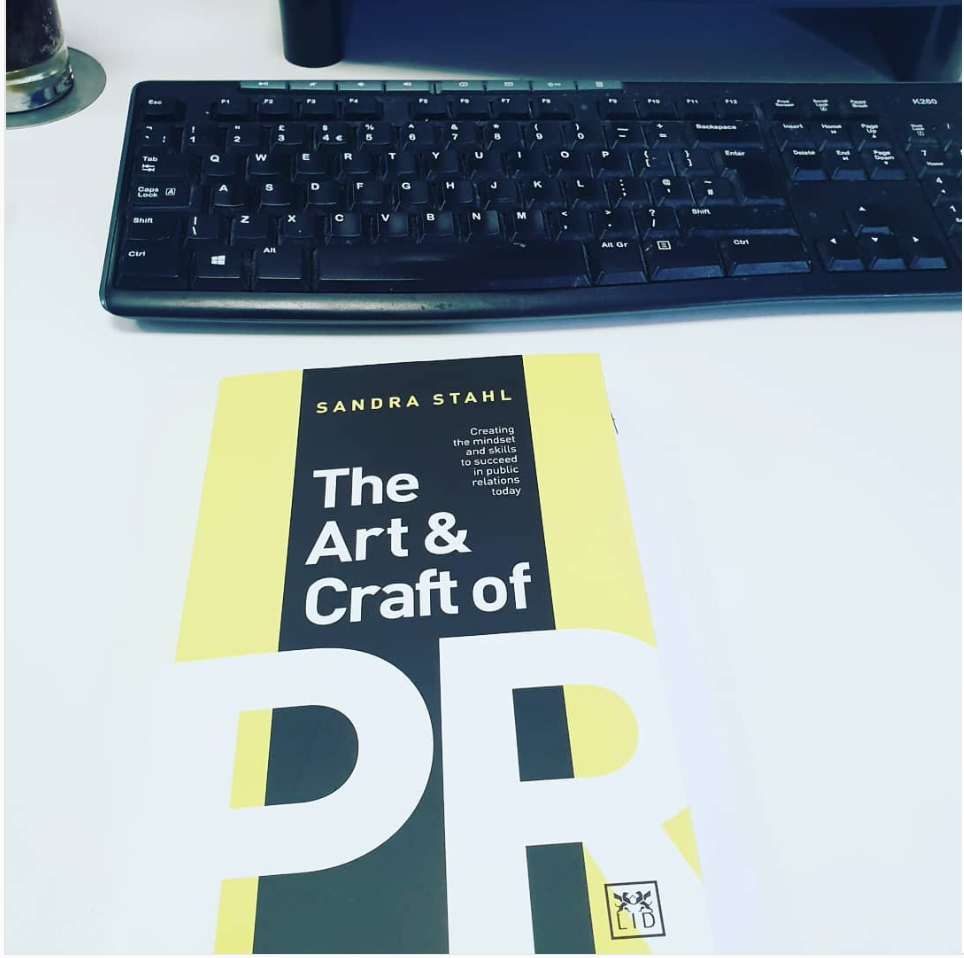
So a couple of weeks ago I was contacted online and asked if I would be interested in receiving a free copy of the new book: The Art and Craft of PR by Sandra Stahl.
For those of you that haven’t heard of her, Sandra is a co-founder of the PR agency, Jacobstahl, Adjunct Professor in the Branding and Integrated Communications master’s degree program at The City College of New York, and now a published author. She has more than 30 years of experience in communications.
This book is apparently aimed at focusing on the truth about public relations. In Sandra’s view no matter how many new tactics or channels we have, there will always be some skills that remain fundamental to public relations.
For the book, Sandra tested her own set of ‘must-have’ skills with 17 PR leaders, many of which are recognized as the best in the communications industry, including agency CEOs and Chief Communications Officers at several top global corporations. The book isn’t as long as some of the other texts I have been through at just under 200 pages – so it doesn’t take ages to read. There are some brilliant quotes in it such as this one from Charlotte Otto, former Global External Relations Officer at Proctor & Gamble:
“”It seems social media has gotten us all confused – it’s a tactic, but people think oh, that’s PR because it offers accessible communication and immediate potential for engagement. This misunderstanding has led us down the wrong path.”
She is essentially saying we shouldn’t get so absorbed in the tactical elements of PR and try to consider the bigger picture more. Stop thinking tactics and start thinking strategy.
Another quote that caught my eye, as I have mentioned this a lot on my social media, and I agree with Margery Kraus, Founder and Chairman of APCO:
“Sometimes the industry is so worried about competition from other disciplines it loses sight of the strategic value it can add by just coming up with good and bold ideas that pay attention to boundaries.”
I agree with this, sometimes our industry likes to debate what public relations is in 2018 rather than focussing on the innovations going on in marketing and the wider world. PRs need to keep adapting to ensure we stay relevant and that brings me to my next point.
Another point that caught my interest, was her point that agility is now very important in PR. It is and I do think it’s important in business anyway – it is always the huge businesses that cannot adapt to market conditions quick enough, that struggle and can be hit hardest. Sandra comments:
“Standing still will lead to stasis; its only by moving forward and reminaing adaptable that we can evolve and the same speed as the world around us.”
Sandra also had an interesting take on PR and advertising. Sandra comments: “Advertising is based on creating a revenue-producing relationship with stakeholder. PR can achieve this but it’s not their sole or even primary purpose.” I completely agree with that – PR creates trust and the environment for sales – sure sales are a by-product sometimes, but not always, and being judged against advertising all of the time can become tiresome for us working in communications. We all understand in 2018 we need to have a clear return but the two specialisms often have very different objectives.
Sandra dedicates a whole chapter to creativity and ends it by commenting:
“Market research, analytics and a tight strategy all have their places as ‘must haves’ alongside creativity.”
The best quote in the book though was from Ivan Pollard, president of strategic marketing at Coca-Cola who says: “Data plus creativity is the future.” A-men to that – insight based communications is what everyone should be practising today.
The book concludes with messages from several CEOs and leading PR people. In this section, Sandra takes their view on what message they have for PR Professionals and those considering joining our industry. One of the best messages was from Mike Fernadez who is CEO of Burson Marsteller who said:
“Only when it is understood do you forge the kind of relationships that matter. That’s what PR does: builds relationships regardless of the medium.”
Paul Homles from the Holmes Group adds:
“Agility is a must – you need to be able to respond in real-time to new challenges and new information because the speed of shot happening is just incredible.”
Another useful tip was to make sure you never stop growing as a PR professional – always look to learn at least 20%. I would hope that is why you are still reading this blog post because you want to get better at PR – we all do.
In summary, I think Sandra has written a strong and solid PR book that could be used by an executive starting out in the industry or someone just looking for some hot tips. The interviews can be interesting to see how people view modern PR in 2018 – a lot has changed but then again not a lot has. We still have PR people arguing over what PR means and what it actually is. I think we should focus more of our time on telling great stories in whatever format our audience most wants.



